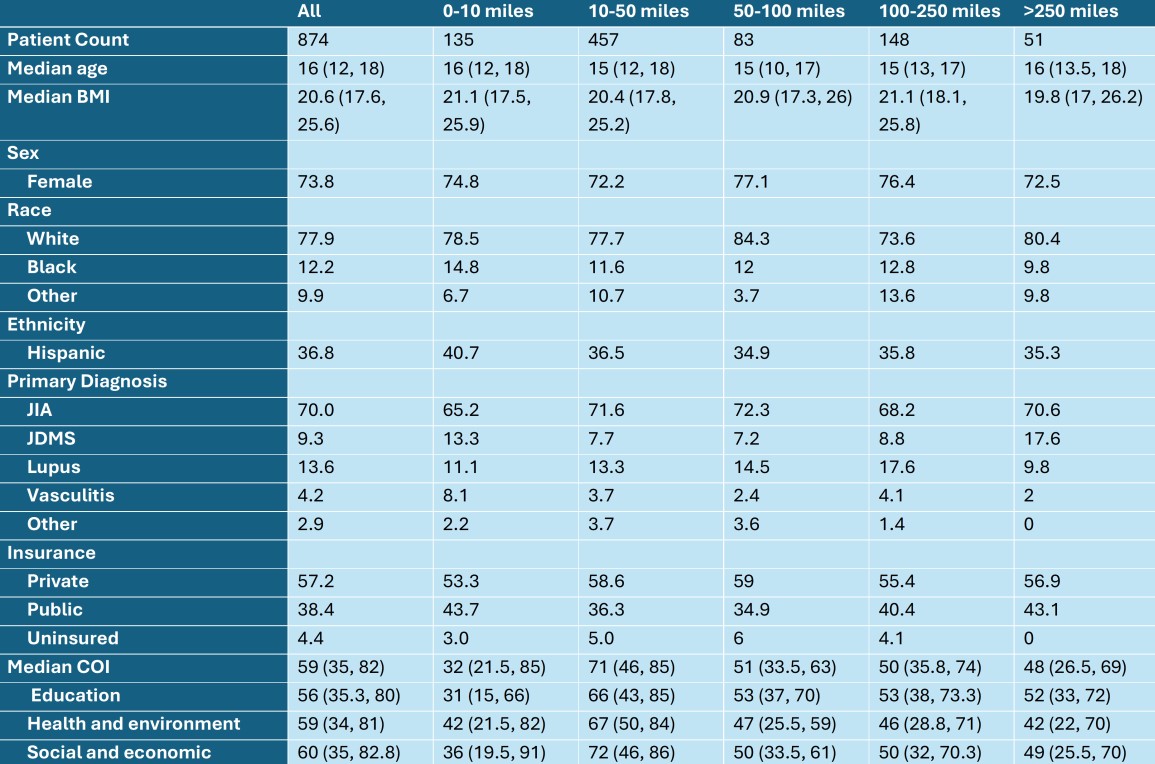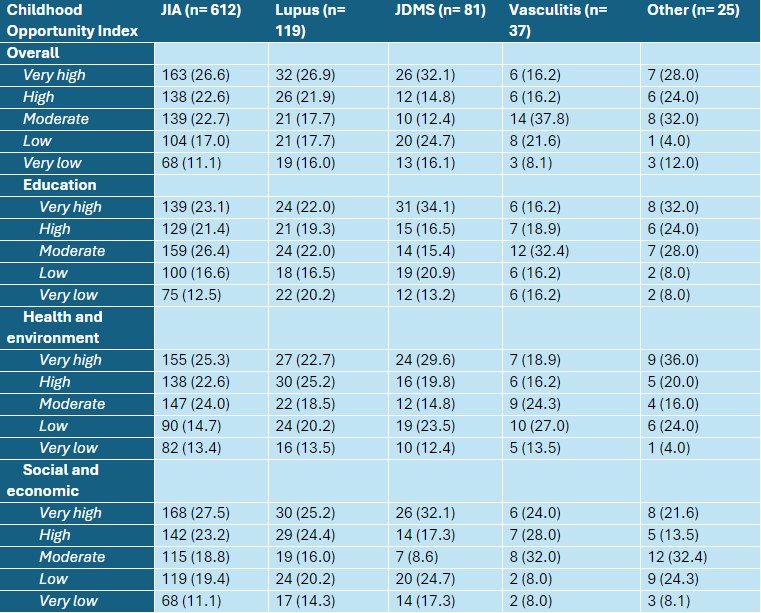Session Information
Session Type: Poster Session C
Session Time: 10:30AM-12:30PM
Background/Purpose: Children from disadvantaged neighborhoods and socioeconomic backgrounds experience worse outcomes and delays in care.¹ The Childhood Opportunity Index (COI) is a multidimensional validated tool that allows us to estimate the potential for children in different neighborhoods to succeed across different neighborhood conditions and/or inequities geographically.² The goal of this pilot is to test for patterns of COI and distance to care in a cohort of pediatric patients with rheumatic disease.
Methods: Patient data was collected from January 2022- November 2023. Residential addresses were geocoded and linked to COI by census tract. We included patients from Texas and Oklahoma. ArcGIS Pro was used for all geocoding and analysis. Patient demographics, primary diagnosis, and geographic data were analyzed using standard descriptive statistics and Euclidean distance.
Results: We included 874 total patients. The maximum driving distance to our center was 575 miles. Only 4% (34/874) of patients lived within 5 miles from our center. Most of our patients come from within 50 miles of our center, and Black and Hispanic patients were more likely to come from neighborhoods within 10 miles, while White patients were more likely to travel distances of more than 50 miles. Patients who live closest to the hospital have the lowest COI overall. Patients who travel the furthest distance to care have the lowest COI domain scores, and there was a negative linear relationship with all COI domains and distance. Patients with lupus and JDM were more likely to travel a further distance (100-250 and >250 miles to care respectively).
Conclusion: Overall, children with rheumatic disease travel far distances to care, and those near our center have low COI. Furthermore, our patients who travel the furthest distance to care score the lowest in each COI domain. Most of our patients ranked highest in social and economic COI domains. We were also able to identify that patients with lupus and JDM are most likely to travel farther distances. In conclusion, COI may help us understand additional barriers to care, and future directions include exploring how COI and/or distance to care may affect disease outcome.
1. Akinsete AM, Woo JMP, Rubinstein TB. Disparities in Pediatric Rheumatic Diseases. Rheum Dis Clin North Am. Feb 2022;48(1):183-198. doi:10.1016/j.rdc.2021.09.014
2. Noelke, C., McArdle, N., Baek, M., Huntington, N., Huber, R., Hardy, E., & Acevedo-Garcia, D. (2020). Child Opportunity Index 2.0 Technical Documentation. Retrieved from diversitydatakids.org/researchlibrary/research-brief/how-we-built-it.
To cite this abstract in AMA style:
Ciaglia K, Beauchamp A. Exploring the Childhood Opportunity Index and Distance to Care in a Cohort of Children with Rheumatic Disease [abstract]. Arthritis Rheumatol. 2024; 76 (suppl 9). https://acrabstracts.org/abstract/exploring-the-childhood-opportunity-index-and-distance-to-care-in-a-cohort-of-children-with-rheumatic-disease/. Accessed .« Back to ACR Convergence 2024
ACR Meeting Abstracts - https://acrabstracts.org/abstract/exploring-the-childhood-opportunity-index-and-distance-to-care-in-a-cohort-of-children-with-rheumatic-disease/



